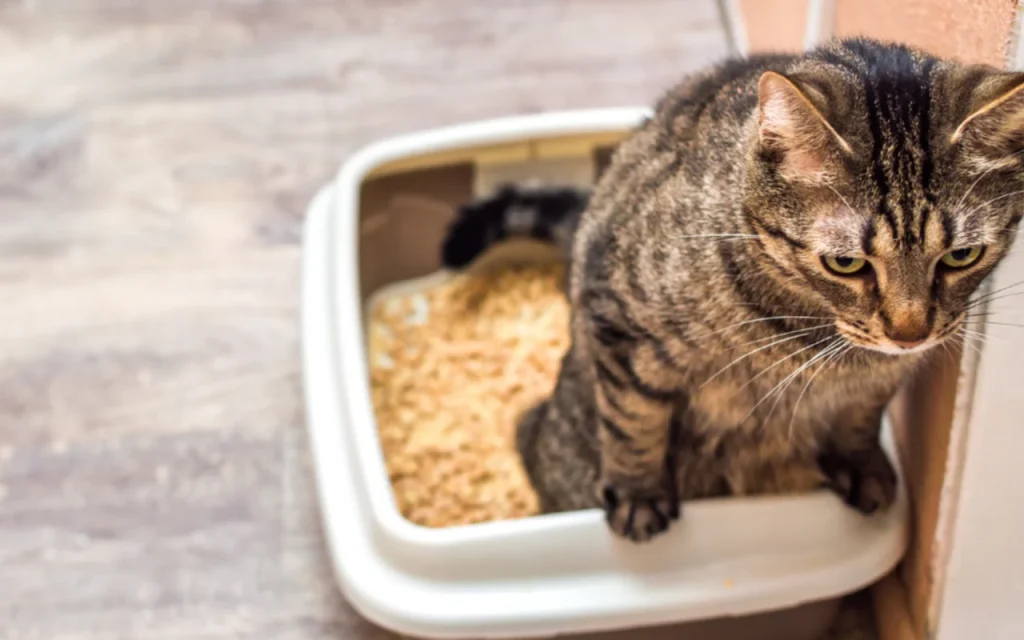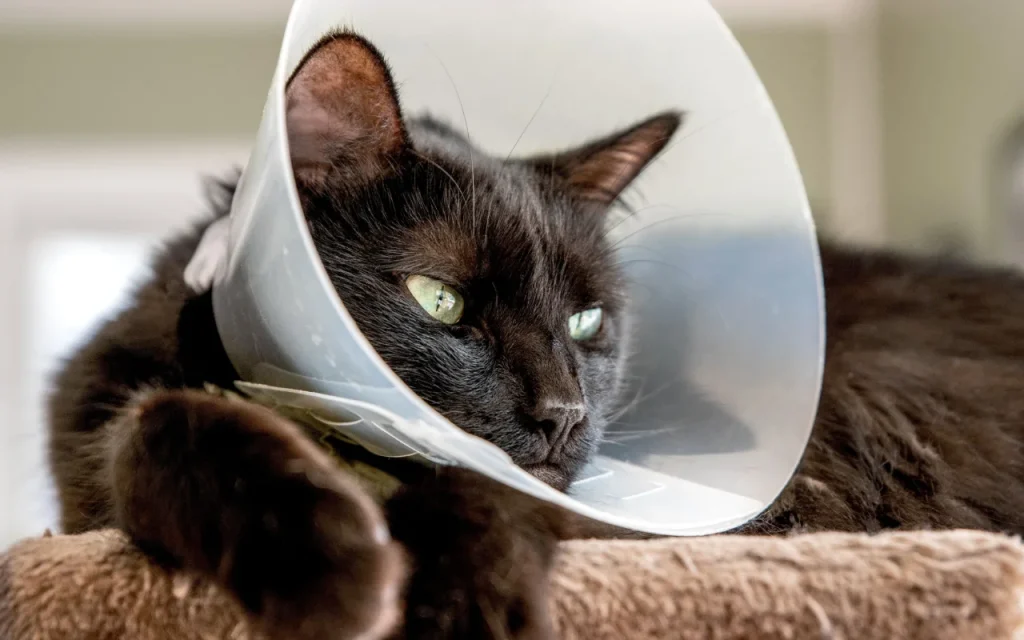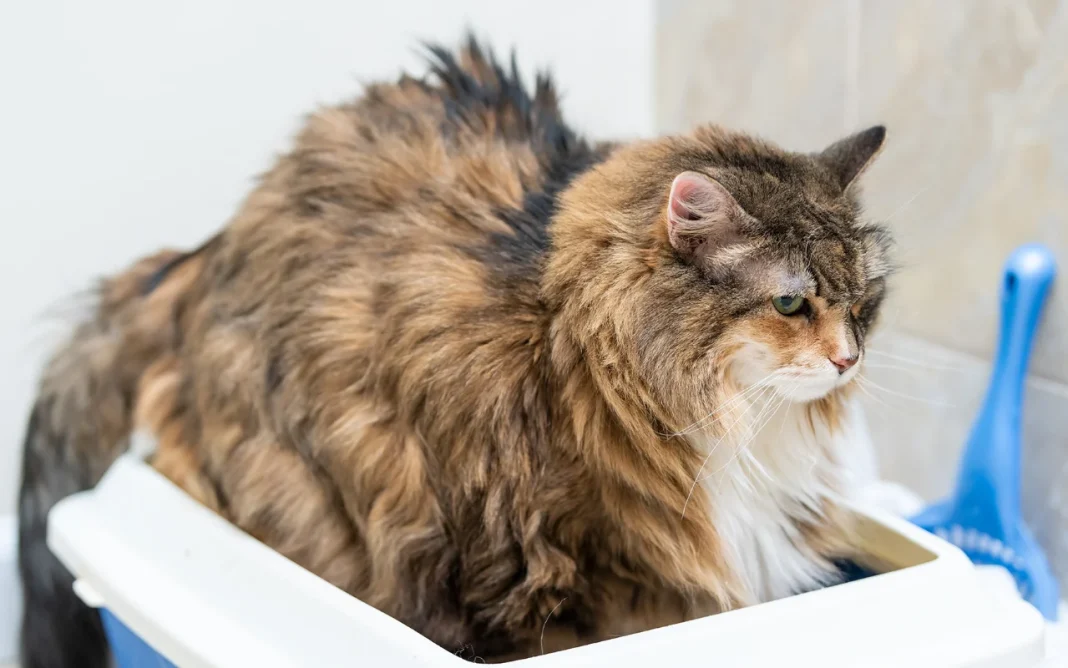Okay, so, rectal polyps in cats. Sounds a bit… medical and maybe a tad alarming if it’s a new term for you, right? But let’s just have a relaxed chat about it. If you’ve been spotting something a bit off when your furry mate uses the litter box – maybe a little blood, or they seem to be straining – your mind probably jumps to all sorts of worries, and that’s totally normal. Believe me, as a vet, I get it; anything unusual with our pets, especially in those, shall we say, delicate areas, can make us feel pretty anxious. But honestly, just knowing a bit more about what could be going on is often the best way to feel a little less worried and more on top of things.
Seeing Trouble Down Below? What Rectal Polyps Are All About

First things first, what is a rectal polyp? Well, in simple terms, it’s a little growth, a bit like a small skin tag or a tiny mushroom, that develops on the lining of your cat’s rectum (that’s the very last bit of their large intestine, right before, well, the exit). Think of it as an unexpected little bump on the inside wall.
And here’s a bit of a silver lining right off the bat: usually, when we find these little polyp-y things in a cat’s rectum, they’re what we vets call ‘benign.’ That’s just our fancy word for ‘not cancer,’ meaning they tend to just stay put and cause a bit of local bother, rather than being a big, scary villain that spreads. That said, and it’s why we never just guess, once in a blue moon a growth back there could be something more troublesome, something malignant, or cancerous. So, if you see anything suspicious, getting us vets to take a proper look is always the way to go – better safe than sorry, every single time.
Clues Your Cat Might Be Giving You: Spotting the Signs

Cats are such masters at hiding when they don’t feel well, aren’t they? But if there’s a rectal polyp causing a bit of bother, there are some subtle (and sometimes not-so-subtle) signs you might pick up on:
So, what might make you go, ‘Hmm, something’s not right with kitty’s bottom’? Well, often the first thing people spot is a little bright red blood on the poop, or maybe a smear in the litter tray. That’s a big clue, because these polyps can be a bit delicate and bleed when stool goes past. Sometimes, too, the poop itself might look a bit… slimy? More mucus-y than usual, you know? That can happen if things are a bit inflamed down there. And get this, if a polyp is getting a bit chunky, it can actually change the shape of their poops – they might look thinner, almost like ribbons. Now and then, if a polyp is hanging out right near the exit, you might even spot the little blighter itself, especially if your cat is straining. It’d likely look like a little pink, fleshy bump. Another thing cats do when they’re uncomfortable back there? Lick, lick, lick. If your cat suddenly becomes very interested in grooming their rear end more than usual, that’s often their way of saying, ‘Hey, it’s itchy or sore here!’ And don’t be surprised if their bowel habits go a bit haywire – maybe some diarrhea, or they could get a bit bunged up if that polyp is causing a bit of a traffic jam. Honestly, if you see even just one of these things cropping up, it’s probably a good moment to think, ‘Right, perhaps a quick chat with the vet wouldn’t go amiss.’
Getting to the Bottom of It: How Your Vet Figures It Out
So, you’ve brought your cat in because you’re worried about some of those signs. What happens next? Well, as your vet, the first thing I’d do is have a really good chat with you about everything you’ve seen at home – when it started, how often it’s happening, any other little changes in your cat. Every detail helps!
So, after our chat, I’d have a gentle feel, which includes, yes, a very careful check of their rear end. Now, if a polyp is tiny or hiding a bit further up, I might not feel it just like that, but it’s always where we start. If we need a proper look-see inside, to really get the lay of the land, we often use a neat bit of kit – basically a tiny camera on a skinny tube, something called a proctoscope or colonoscope. It lets us actually peek inside their rectum and colon. For that, your kitty would need to be a bit sleepy – a nice bit of sedation or a light anesthetic – so they’re totally comfortable and still, and we can see everything clearly, no wiggling! And then, here’s the part that really tells us what we’re dealing with: if we spot a polyp, or anything that looks a bit out of the ordinary, the best thing we can do is get a little sample, a biopsy. That means we take a tiny piece of it – or sometimes, if it’s small and easy to get to, we might take the whole thing right then and there – and pop it off to a special lab. Over there, a pathologist, who’s a super-specialist at looking at tissues under a microscope, can tell us exactly what that little growth is made of. That’s how we know for sure if it’s just one of those benign polyps we talked about, or something else we need to be more concerned about. That biopsy is gold, really.
Helping Your Kitty Feel Better: Treatment Paths Vets Often Recommend

If it turns out your cat does have a rectal polyp, what do we do about it? Well, for most benign rectal polyps in cats, the main treatment, and usually the curative one, is to surgically remove it (this is called a polypectomy).
How we do that can depend a bit on the polyp’s size, its location, and how many there are:
- Simple Traction Avulsion: If a polyp has a nice, narrow stalk (like a little mushroom stem) and it’s easy to reach, sometimes your vet can gently grasp it and remove it by gentle traction.
- Surgical Excision: For larger polyps, or those with a broader base, a more formal surgical approach might be needed to cut it out carefully. This might be done from the outside if the polyp is very close to the anus, or sometimes via that little camera (endoscopically) if it’s a bit further up, using special instruments. Sometimes, a laser can be used to help remove them too.
- Importance of Sending it for Analysis: No matter how it’s removed, it’s really, really important that the entire polyp (or representative pieces if it’s very large and removed in bits) is sent off for that histopathology (the fancy word for looking at the tissue under the microscope). This confirms that it is just a benign polyp and, crucially, helps us check if we managed to get all of it (we look for “clean margins,” which means there are no polyp cells left at the edges of where it was removed).
After the Procedure: Your cat will usually need a bit of TLC afterwards. They might have some pain relief medication, and sometimes a short course of antibiotics if there’s any concern about infection. Keeping their stools soft with a special diet or a stool softener for a little while can also be really helpful to make going to the toilet more comfortable as the area heals. And, of course, the dreaded “cone of shame” (Elizabethan collar) might be needed for a bit to stop them from licking at the surgical site!
What to Expect After Treatment & Keeping an Eye Out
The really good news is that for benign rectal polyps in cats, the prognosis after they’re completely removed is generally excellent! Once it’s gone, it’s usually gone for good, though it’s always a good idea to keep an eye out for any recurrence of those original signs, just in case. Sometimes, very rarely, a new polyp might develop later on, or if the first one wasn’t completely removed, it could try to grow back. But for the most part, cats bounce back really well.
If, heaven forbid, that biopsy comes back showing something more serious than a simple benign polyp, then your vet will have a very different conversation with you about what that means and what the next steps might be. But thankfully, that’s not the usual scenario with these.
The main thing is, if you see any of those signs we talked about – that straining, the blood, anything that just doesn’t seem right with your cat’s bathroom habits or their bottom – please don’t just wait and hope it goes away. A quick chat with your vet can get things checked out, put your mind at rest, or get your kitty the help they need to feel comfortable again. You’re their best advocate!






